There are many coat colors of horses out there, and determining horse color involves more than just body color
By Vicky, Five Star Ranch Staff Writer
What color is love to you? For some it’s the color of a rose; Persian, Butterscotch, Casino or Tallyho; for me its many… Brindle dun, chestnut, roan, overo or crème. Confused? Maybe not if your love is horses. Maybe it still is! When I first became involved with horses, I had no idea there were so many different colors and coat patterns.
Like the rose, what makes up a coat of color is genetics, but I don’t plan to go into detail on dominant or recessive genes. I like the fashion show of pattern and color available on my favorite animal. I’ve put together a list, some pictures and registry sites to help you decide your favorite color, or maybe the true color of your love.
Many of these colors you will recognize, but may not realize all the subtle differences within a color category. Just like art, add a little white, add a little black, swirl them around and you have diluted forms of a base color. Lets look at the solid body colors first.
Coats of Solid Color:
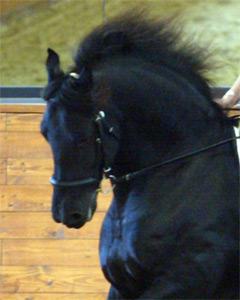
- Black. A black horse is black all over. They may have a star, stripe or other markings but will be a solid color over their body. A Standard Black horse will fade in the sunlight, and turn a rusty brown if left out, where a Jet Black horse does not fade at all! Jet black is a blue-black color that is truly fade resistant.
- White/Crème. There are no albino horses. White horses have a solid white coat, pink skin, and brown or occasionally blue eyes. Crèmes, like a white horse, have pink skin and usually blue eyes. Crèmes have two coat variations:
- Cremello – like a white, this horse has pink skin, with blue eyes, but a cream colored coat with a white mane and tail.
- Perlino – has pink skin, blue eyes, cream body with a red tint to the points.
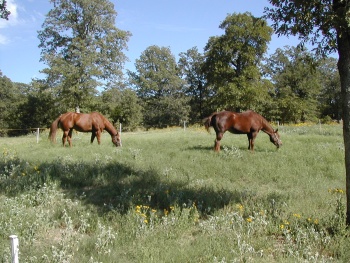
-
- Chestnut/Sorrel. A chestnut has a solid base color of red over the body, mane and tail, with no dark points. They often have various stripes, and stockings. I think of new penny color in fur. Sorrel – has the same solid body coloring of red with a flaxen color mane and tail.
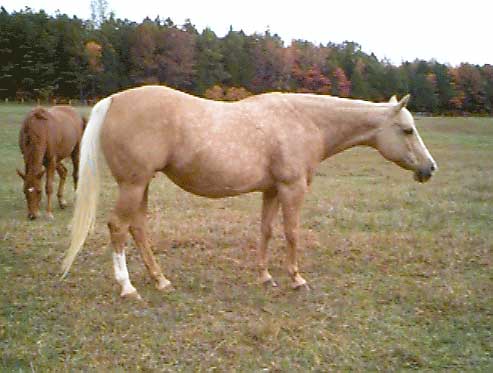
- Palomino. Much like the sorrel, a Palomino has a very light cream or white mane and tail, with a yellow, golden or tan colored body. Palominos, however, have no red coloring in the base coat. You can see a dappled palomino in the picture above.
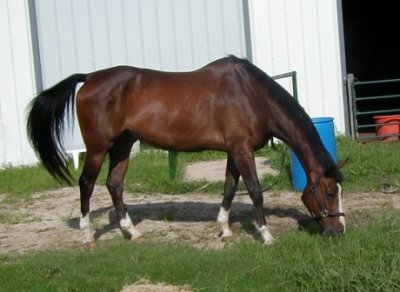
- Bay. Above is a picture of a bay horse. This is one of the most common colors you’ll find in horses. A diluted black horse, bays have black points, mane and tail, with the black leg coloring at least to the knee and hock. Body colors range from red to dark brown. As with many colors there are sub-categories:
- Standard Bay – solid color red body (cherry wood color) with black points.
- Blood Bay – dark blood-red body color. Blood bay horses can almost have a purplish cast to them.
- Mahogany Bay – as the name implies, the brown red color of the wood, with some black mixed into coat.
- Copper Bay – chestnut orange-red body.
- Golden Bay – a yellow, more golden color body.
- Wild Bay – a bay with short black points on legs up to fetlocks.
-
- Brown. Very dark body, black mane, tail and points. The body color is almost black with lighter brown coloring at the flanks, behind the hips and around the muzzle and eyes. Looks a little like a bleached standard black.
- Buckskin/Dun. The International Buckskin Horse Association recognizes 5 colors: Buckskin, Grulla, Dun, Red Dun, and Brindle Dun http://www.ibha.net/colors.htm, as does the American Buckskin Registry Association.
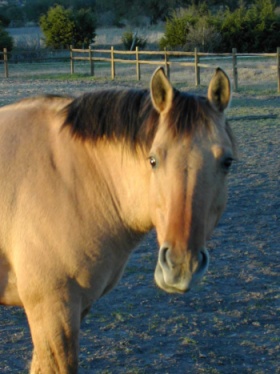
- Buckskin – a buckskin is a diluted bay, with black points of a bay but with a tan body color. Picture a palomino but with black points.
- Grulla – (grew-yah) is a slate brown coat with black points and dorsal stripe. All grullas have dark faces.
- Dun – looks very much like a buckskin, and have black points, and a diluted red/tan body color. Duns have an extra feature of a dorsal stripe down the center of the back. Additionally, they have zebra stripping on the legs and a transverse strip at the withers.
- Red Dun – in place of the black points of a dun, the red dun has red (chestnut) colored points, and a creamy body color. Stripping is in red.
- Brindle Dun – this coat is just like a brindle coloring of a dog. Same dark points and dorsal stripe.
-
- Champagne. A base color diluted with plenty of cream. Champagnes will retain darker points of a bay, but with a coffee with a lot of cream look, and golden cream body. See the
International Champagne Horse Registry site for further details on identifying this coat color.
Once you have the base coat colors, mix up the genetics, stir up the paint, and wow, the pallet really can change!
Coats of Many Colors:
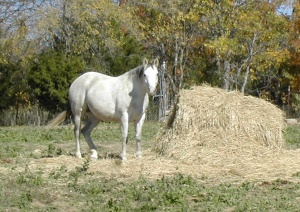
- Gray. Although many may look white, a coat of gray is made up of white hair mixed with color. Unlike the white, cremello or perlino, the skin is dark not pink. Grays begin life as a coat of a different color, and change to gray as they age. Gray is one of my loves, as you have a different color/pattern every year. Grays have a dark muzzle, and are often dappled. Many older grays become “flea-bitten,” developing brown spots over the body.
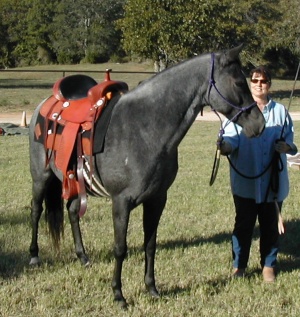
- Roan. Roans have a mixed coat like a gray, but are born with the mix, unlike the gray above. Roan point stay a solid color. Most common are Blue (roan on black), Red (roan on bay) or Strawberry (roan on Chestnut).
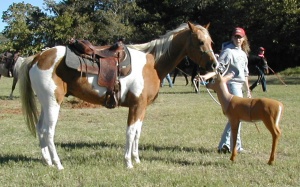
- Pinto. Two coat patterns, Tobiano and Overo, are recognized by the Pinto Horse Association of America, Inc.This registry is for horses, ponies that possess the required white/dark coloration. The American Paint Horse Association, (paint, quarter horse, or thoroughbred bloodlines) also allows the Tovero Pattern. All three are displayed on the American Paint Horse Association website.
- Tobiano – pinto pattern with white crossing the spine of the body between the withers and tail. Most have white stockings. May by any base color with pink skin under the white.
- Overo – opposite of the tobiano, with the base color crossing the spine. Generally solid legs, often have blue eyes.
- Tovero – a paint pattern of a white horse, pink skin, with some dark coloring around the ears, mouth, chest, flanks and base of the tail.
-
- Appaloosa – unique coat patterns, white sclera, mottled skin and stripped hooves distinguish the appaloosa. Some of the coat patterns include:
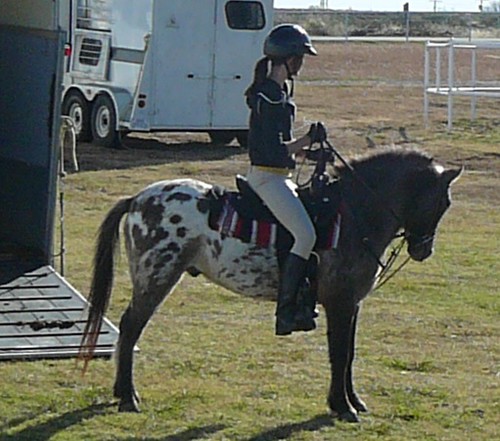
- Blanket – solid body color with a white patch/blanket over the hips and rump. May be solid or contain spots.
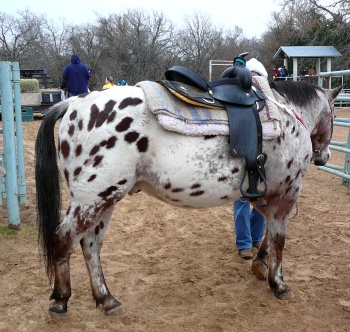
- Leopard Appaloosa – white with colored spots all over, like the cat the name evokes.
- Varnish – Roaning on head and some solid spotting.
- Snowflake – solid body with small white spots. Reverse of the flea-bitten gray. Examples may be seen at the Appaloosa Horse Club
- Pintaloosa – combination of both the pinto and appaloosa colorings. See the International Spotted Horse Registry.
- Sabino – looks very similar to the overo but has jagged roan looking edges to the patterns.
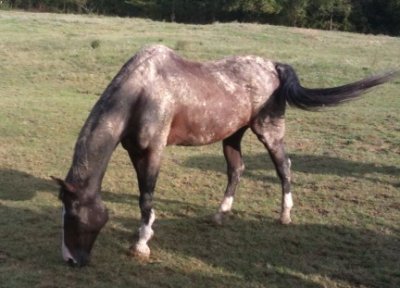
No matter the color, spots, no spots, after the rain, a good splash, and a roll, they all are colored Mud. Happy Grooming!!
Books on Horse Colors
There are many excellent technical books on horse colors and the genetics involved to acquire a specific coat color. Here are a few of my favorites.
The book Horse Color Genetics is the bible for information on horse color. Written by D. Phillip Sponenberg and Rebecca Bellone, this book is considered as the authoritative source for horse coat colors. If you are a breeder or even a backyard horse owner who is thinking of breeding and want a certain color, this is the text book for you.
Another excellent book is Horse Color Explained: A Breeders Perspective. This one is written in easy to understand layman terms and can help a breeder make informed decisions if breeding for color.